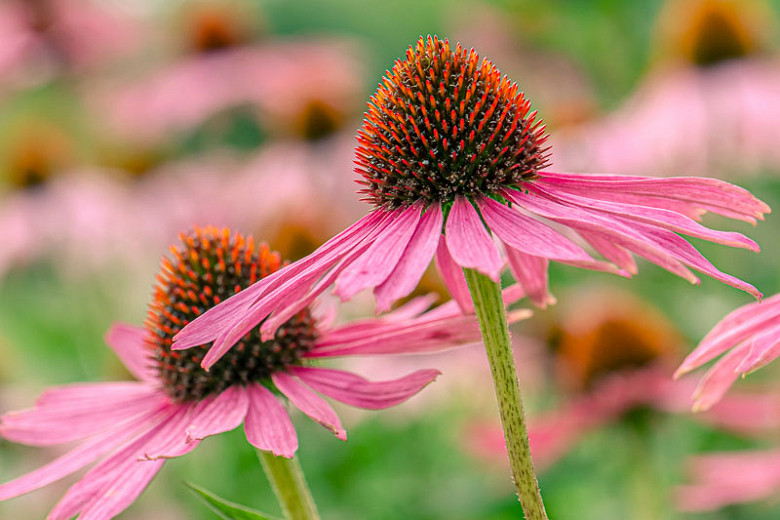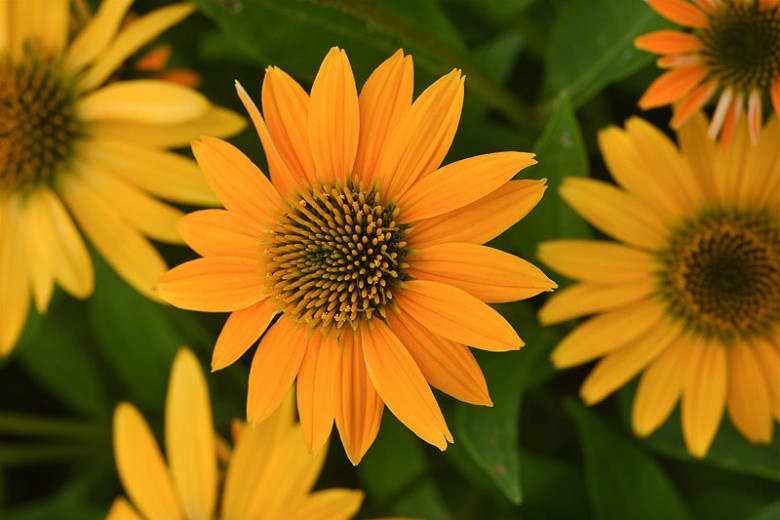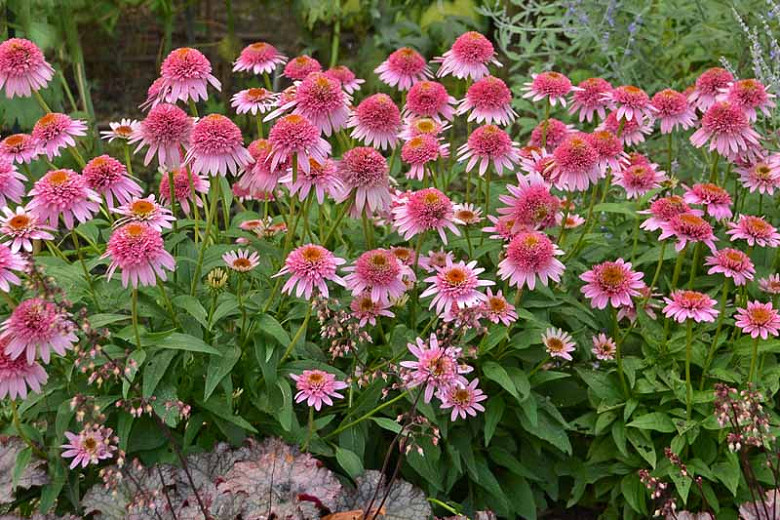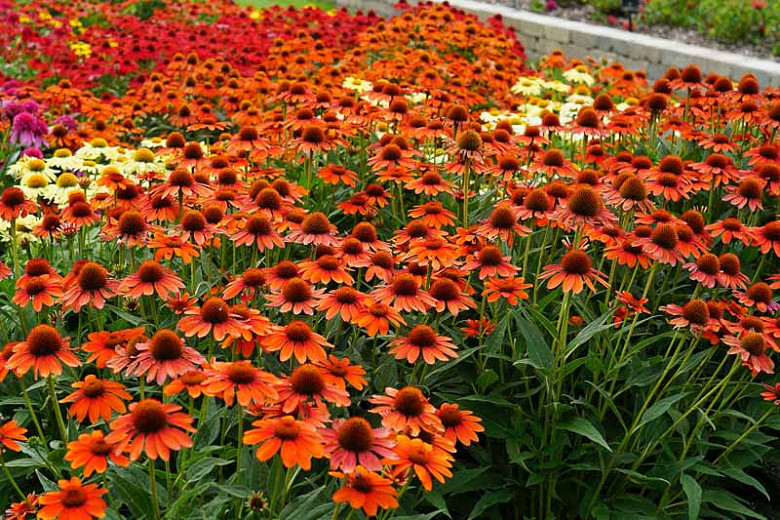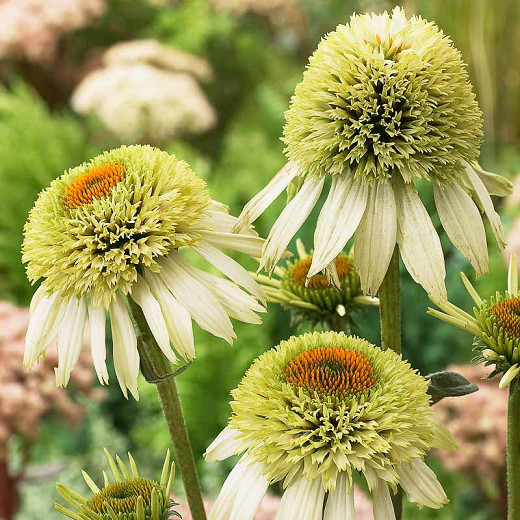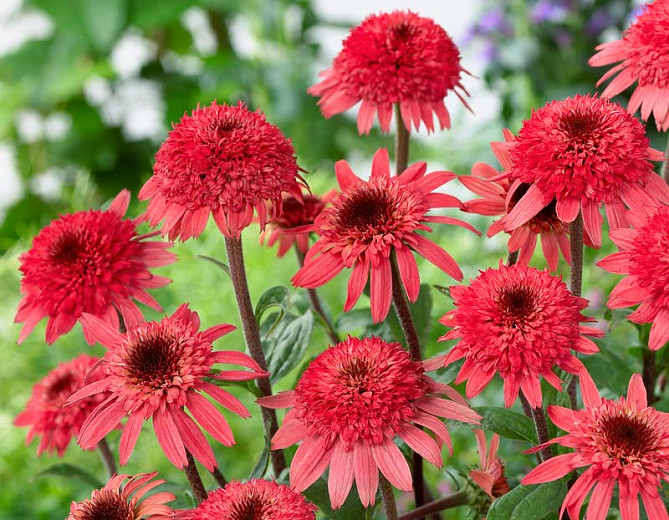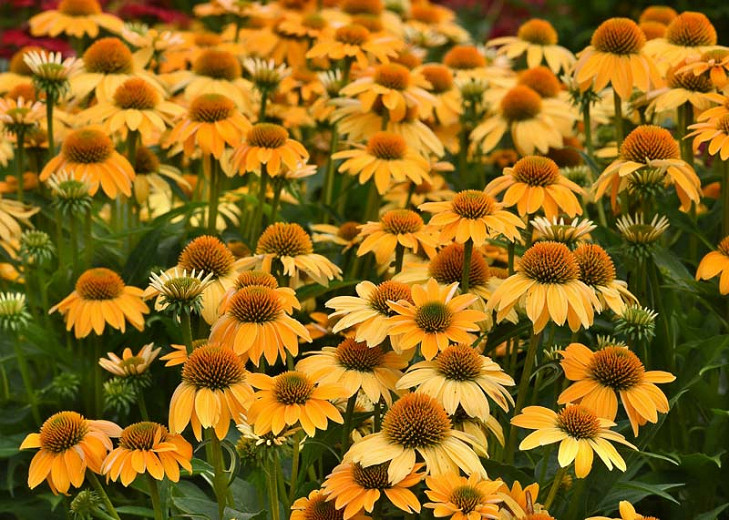Echinacea purpurea (Purple Coneflower)
A popular perennial, Echinacea purpurea (Purple Coneflower) is an outstanding herbaceous perennial boasting a profusion of large, daisy-like, purple coneflowers, 5 in. across (12 cm), throughout summer. Long-lasting, the showy blossoms are borne atop strong erect stems clad with coarse, lance-shaped, dark green leaves. They feature purple, drooping rays surrounding a spiny, dark brown central cone. Rich in nectar, they attract butterflies and hummingbirds. If its flower heads are not removed in the fall, the blackened cones will be visited by birds that feed on the seeds. Vigorous and easy care, drought, heat, humidity and poor soil tolerant, Echinacea purpurea is a suitable addition to a prairie garden, looks terrific when massed in perennial borders or in flower arrangements. Its flowers are used to make an extremely popular herbal tea, reported to help strengthen the immune system.
- Grows in clumps up to 24-60 in. tall (60-150 cm) and 18-24 in. wide (45-60 cm). Freely self-seeds in the garden and can become very aggressive.
- Thrives in full sun in average, dry to medium moisture, well drained soils. Tolerant of drought, heat and humidity.
- Perfect choice for beds and borders, prairies and meadows, wildflower gardens or cottage gardens.
- Excellent as cut flowers. If flower heads are not removed in the fall, the blackened cones will be visited by birds that feed on the seeds.
- No serious pest or disease issues. Attractive to butterflies, hummingbirds and other pollinators, but deer resistant.
- Remove spent flowers and cut back the stems to encourage further blooms.
- Propagate by seed in spring. Propagate by division in spring or fall although this plant resents disturbance. Propagate by root cuttings from late autumn to early winter.
- Native to the eastern United States.
Requirements
| Hardiness | 3 – 8 |
|---|---|
| Heat Zones | 1 – 9 |
| Climate Zones | 1, 1A, 1B, 2, 2A, 2B, 3, 3A, 3B, 4, 5, 6, 7, 8, 9, 10, 11, 12, 13, 14, 15, 16, 17, 18, 19, 20, 21, 22, 23, 24, A2, A3 |
| Plant Type | Perennials |
| Plant Family | Echinacea – Coneflowers |
| Exposure | Full Sun |
| Season of Interest | Spring (Mid,Late)Summer (Early,Mid,Late) |
| Height | 2' – 5' (60cm – 150cm) |
| Spread | 1' – 2' (30cm – 60cm) |
| Spacing | 24″ (60cm) |
| Water Needs | Low, Average |
| Maintenance | Low |
| Soil Type | Chalk, Loam, Sand |
| Soil pH | Acid, Alkaline, Neutral |
| Soil Drainage | Well-Drained |
| Characteristics | Cut Flowers, Showy |
| Native Plants | United States, Midwest, Illinois, Indiana, Iowa, Kansas, Michigan, Missouri, Ohio, Wisconsin, Northeast, Connecticut, Maryland, New Jersey, New York, Pennsylvania, Southeast, Alabama, Arkansas, Florida, Georgia, Kentucky, Louisiana, Mississippi, North Carolina, South Carolina, Tennessee, Virginia, West Virginia, Southwest, Oklahoma, Texas |
| Tolerance | Clay Soil, Deer, Drought, Dry Soil, Rocky Soil |
| Attracts | Birds, Butterflies, Hummingbirds |
| Garden Uses | Beds and Borders |
| Garden Styles | Informal and Cottage, Prairie and Meadow |

